Audubon Onward!
AUDUBON’S IMPACT IN THE SOUTHWEST



This report invites you to look more closely at our collective impact over the past year to protect birds and the places they need in the Southwest. Audubon Onward! provides important updates and conservation gains through our forward-looking plan to address the mounting threats of climate change and biodiversity loss—threats that not only impact birds, but people and the planet, too. The following pages underscore an urgency of now, and Audubon’s bold response.
Over the past half-century, we have lost 3 billion birds in North America—an alarming trend skewed heavily toward migratory species. This precipitous loss is a powerful statement about the condition of our planet and a harbinger of things to come if we don’t act strategically and decisively.
Here in the Southwest, birds like Clark’s Nutcracker face a dire future if the current pace of climate change continues. This iconic species is among 116 likely to disappear from our region in most of our lifetimes if we do not scale our work to meet the size and severity of these threats.

It is this urgency that led us to launch our Flight Plan, Audubon’s bold five-year strategic plan, which codifies our evolution into a truly hemispheric organization. BIRDS
Thanks to game-changing science and new digital technologies, we are narrowing knowledge gaps that have long plagued the world of bird conservation. The Lesser Yellowlegs, for example, makes an annual migratory journey from the Boreal Forest in Canada to Chile—a round trip of
Flight Plan is about protecting birds, and at the same time, protecting people and our planet by advancing a generation-shaping agenda to the forefront of conservation.
Beyond boundaries and across vast distances, most migratory birds only spend a fraction of their annual cycle in our state. To protect them, we need to literally meet them where they are. By studying their vast migrations and extensive breeding ranges, we can zero in with precision to address the dizzying array of conservation challenges they face on the wing.
It is your investment and our shared impact in the Southwest that will allow us to achieve hemispheric outcomes—this is how we will bend the bird curve.
Thank you and onward!
Jonathan Hayes EXECUTIVE DIRECTOR
nearly 20,000 miles. Last year, four Lesser Yellowlegs originally tagged in Colombia’s Cauca Valley with transmitters—four single birds spread against the mammoth skies of the Western Hemisphere—flew past Audubon-installed Motus towers located in Michigan and Pennsylvania,
similar to towers located at the Appleton-Whittell Research Ranch in Arizona. These towers captured critical data revealing secrets of the birds’ migratory adventures, giving new revelations and insight into where, when, and how long they sought habitats needed to provide safe rest and food.

THE SCIENCE IS CLEAR We have a unique opportunity to make a positive impact for birds, people, and the planet. While challenges like climate change and biodiversity loss are significant, we can bend the bird curve together. The window of opportunity remains open—if we seize this moment and act now.
The most ambitious strategic effort in our history, Audubon’s Flight Plan establishes our vision for shaping a world where birds and people thrive, elevating Audubon as a global conservation leader. Flight Plan sets five-year milestones in key areas to track progress towards our long-term vision to ‘bend the bird curve,’ in other words, to halt and reverse the alarming decline of birds. Our recognition of the interconnectedness of people, place, and climate led to the development of four milestones we intend to reach over the next five years: Habitat Conservation, Climate, Policy, and Community Building.
MILESTONES:
Flight Plan harnesses the full power of Audubon— including on-the-ground staff across the Western Hemisphere, centers and sanctuaries, and local chapter partners—by focusing on a set of shared outcomes for greater collective impact towards our vision.
Using science to identify, protect, and conserve 300 million acres of bird habitat across the Americas
CLIMATE ACTION
Deploying 100 gigawatts of renewable energy and storing 30 billion tons of carbon through natural climate solutions
Pairing diplomacy with advocacy to develop and implement bird-friendly solutions
Creating a diverse network of bird lovers working together to advance our shared vision
TO
CONSERVATION directs our efforts to the places where birds need us most and to all the places they call home; their seasonal migration across the Western Hemisphere means Audubon also works from boreal Canada to the Southwest to Chile and beyond.
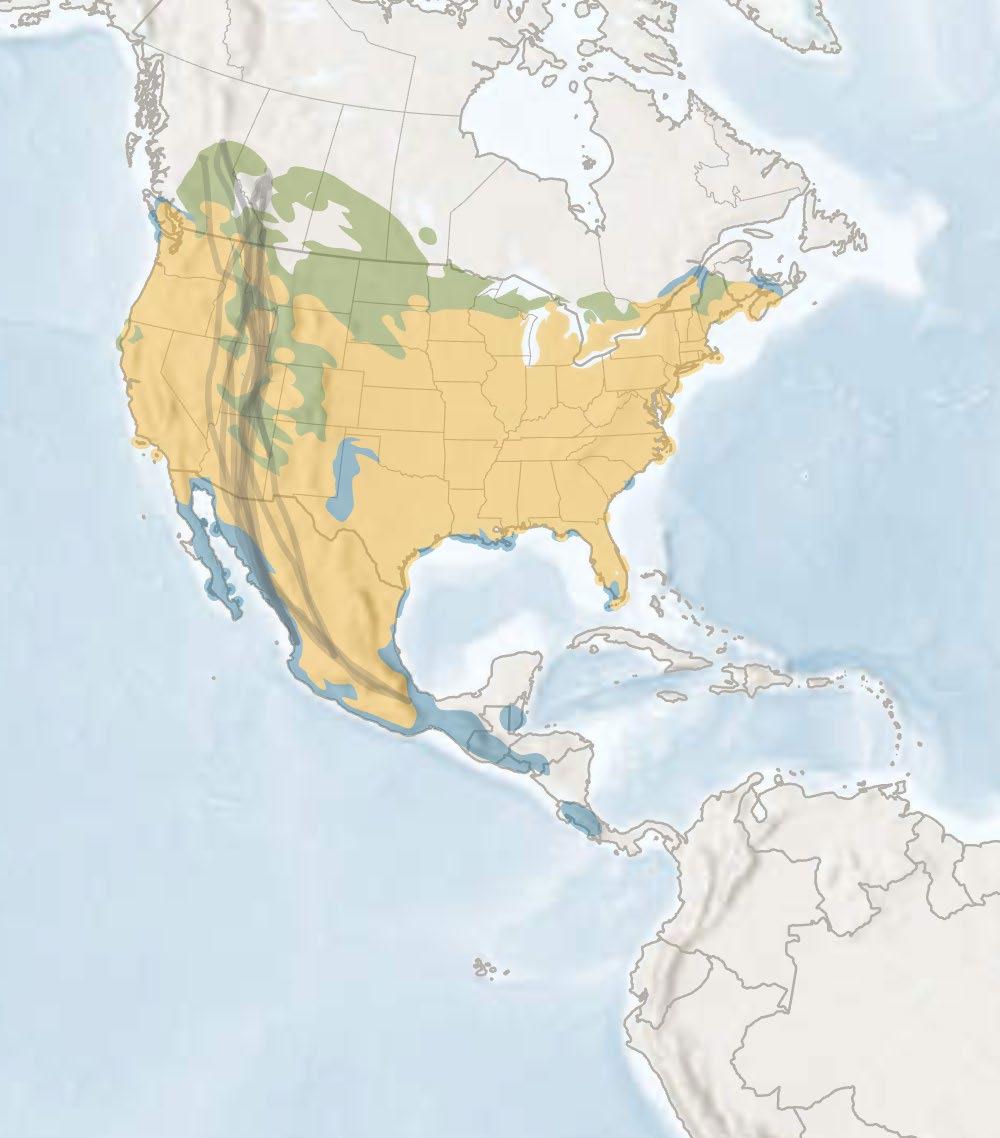

Audubon’s Bird Migration Explorer provides a clearerthan-ever look at bird migration and the incredible journey of individual species. Here we see how the iconic Cooper’s Hawk requires us to work beyond our borders to ensure it remains safe and healthy throughout its annual cycle.
We have made tangible progress towards all our milestones and developed detailed operational plans that drive where we work, what we do, and how we do it. In the past year, Audubon has demonstrated its readiness for Flight Plan achieving significant progress towards each of the milestones—many of which touched down in the Southwest.
Guided by our Flight Plan, we are engaging in conservation activities on 116,650,000 acres across the Americas and influenced 50 renewable energy generation and transmission projects totaling 34 gigawatts—enough energy to power roughly 25 million homes.
• Launch Audubon’s Conservation Ranching Program in Wisconsin, building on our success in fourteen other states where more than 100 ranches covering nearly 3 million acres have earned status as Audubon Certified birdfriendly land.
• Fund seven new projects for protected areas in Perú and six in Bolivia through Conserva Aves, totaling over 1.9 million acres.
• Break ground on the Mid-Barataria Sediment Diversion, the singlelargest ecosystem restoration project in U.S. history; this project will restore and strengthen up to 28,000 acres of wetlands in Louisiana, providing climate resiliency benefits to local communities.
• Begin new engagement on a $10 billion transmission project spanning seven Midwestern states representing up to 20 gigawatts.
• Deliver 10,000 acrefeet of water to benefit Great Salt Lake and Jordan River through local partnerships and co-management of the Great Salt Lake Watershed Enhancement Trust.
• Convene 11 Indigenous Guardians and leaders from five First Nations, key partners on our work in Canada, at Hog Island Audubon Camp in Maine for knowledge exchange and training opportunities.
Through innovative strategies to protect water resources, conserve habitat, and fight climate change, Audubon Southwest is ahead of the game and leading Audubon’s Flight Plan by amplifying our voice and implementing innovative conservation efforts aligned with our hemispheric vision to identify connected, climate-resilient places across the hemisphere where we are focusing our efforts for the greatest impact.
Through our Flight Plan, we commit to achieving significant milestones that will demonstrate measurable impact on the climate and biodiversity crises. We are pleased to report back to you that your investments supported the following impact over the past year:
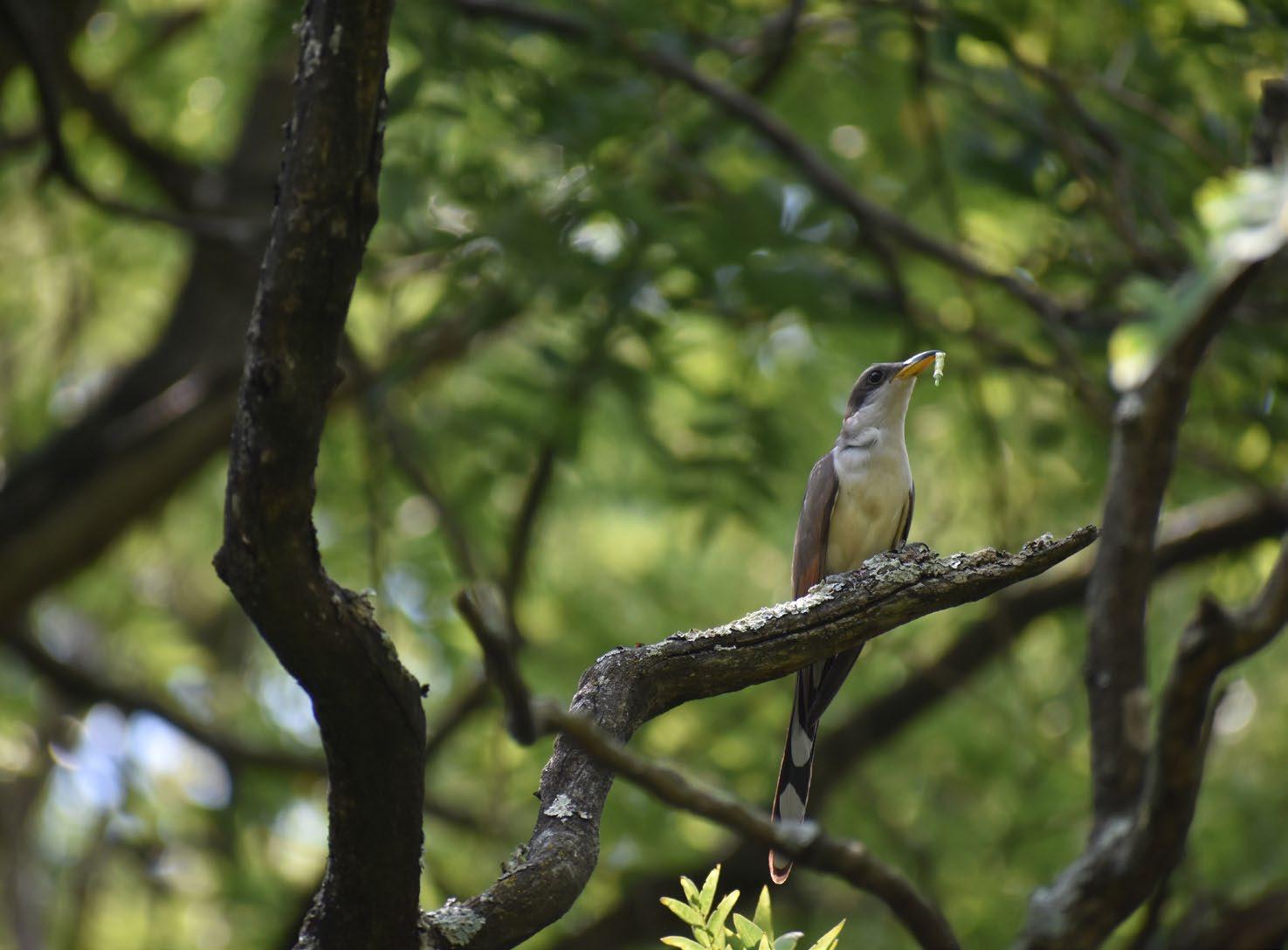
➜ Audubon Southwest’s Bilingual Lower Colorado River Habitats StoryMap was awarded “2024 Best StoryMap” by the Arizona Geographic Information Council! Check out the maps, the data, and the birds that set this valuable resource apart.
Yellow-billed Cuckoo.
Johnny Stutzman/Audubon Photography Awards
➜ Audubon Southwest, in coordination with 14 national and local non-governmental organizations, water management agencies, irrigation districts and sovereign tribal nations, has led the Rio Grande Basin Study of environmental flows, the effort to quantify the flow needs for six sections of the upper Rio Grande in New Mexico.
➜ The Nina Mason Pulliam Rio Salado Audubon Center has a new pollinator garden thanks to a grant that brought the community together to beautify the grounds. We also recently launched the Nina Mason Pulliam Rio Salado Audubon Center Invasive Species Working Group to continue strategic habitat restoration efforts within our landscape.
2024 Regional Impact Report
➜ Audubon Southwest, with a coalition of wildlife and conservation organizations, authored Wildlife and Community Considerations for Renewable Energy and Transmission Projects to encourage co-benefits of renewable projects in Arizona and New Mexico.
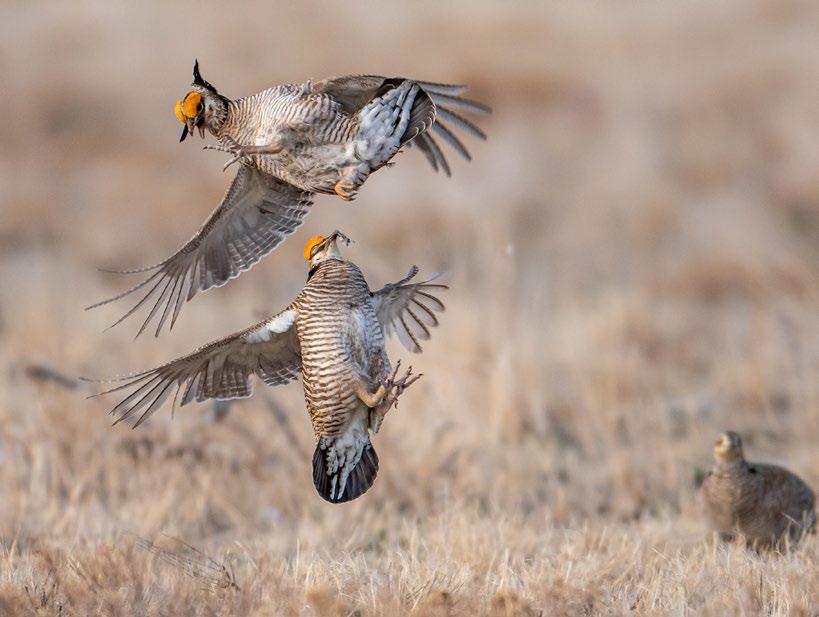
➜ We secured additional funding for the New Mexico’s Environmental Database, and hosted an inter-agency workshop to begin work on improving its scope and expanding its use. The database will be used to create tools like a statewide renewable energy planning map based on areas of lowest environmental impact.
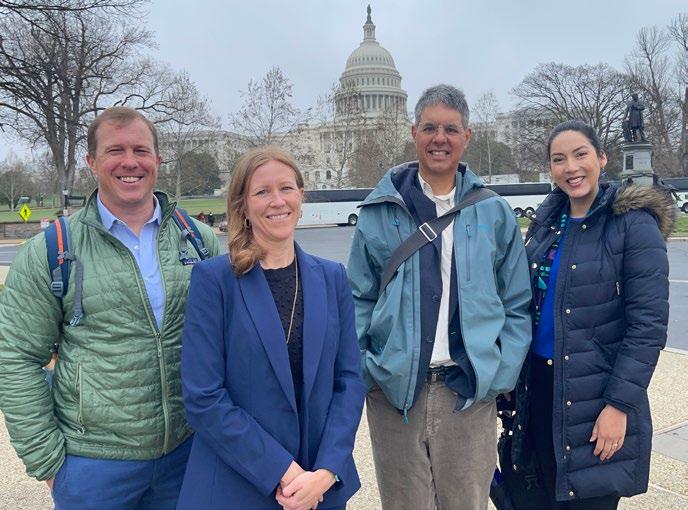
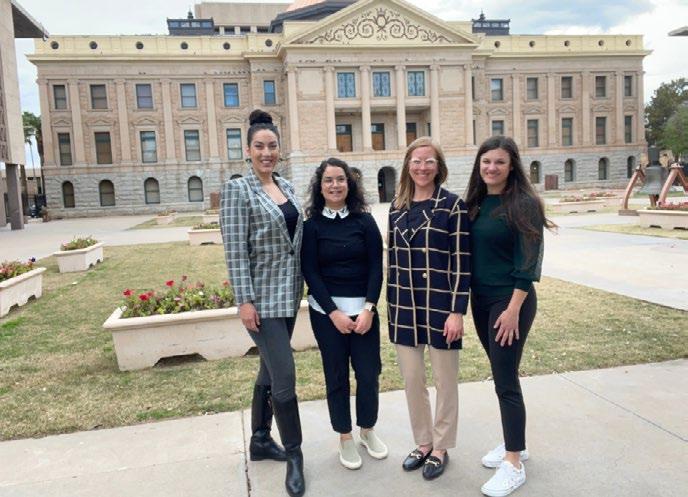
➜ Audubon Southwest staff visited Washington D.C. in March to discuss bird conservation and water policy with Arizona and New Mexico congressional delegation and federal administration.
➜ Haley Paul, Arizona Policy Director, serves on the Arizona Governor’s Water Policy Council, which is accelerating action to Improve Arizona’s groundwater management
From top: Audubon traveled to Washington D.C. to discuss bird conservation and water policy.
Photo: Erika Flores/Audubon Southwest 2024 Advocacy Day. Photo: Erika Flores/ Audubon Southwest
Lesser PrairieChicken.
Photo: David Seidensticker/ Audubon Photography Awards
➜ Judy Calman, New Mexico Policy Director, is leading a coalition to modernize the structure of New Mexico’s Game and Fish Department by securing permanent funding for non-game species, clarifying the mission of the agency as managing all wildlife in the state, and updating the positions and appointment process of the New Mexico State Game Commission, which oversees the Department.
➜ Audubon played a key role in several New Mexico coalitions seeking to improve water policy in the state, including changing statute and advocating for permanent funding for water projects and transactions to leave more water in rivers. With 80 percent of New Mexico’s at-risk bird species dependent on riparian areas, this work is crucial for their survival.

➜ The Nina Mason Pulliam Rio Salado Audubon Center launched its Rio Community Festival program, a new series of events to engage the public while promoting conservation actions. The first event was in October 2024 and showcased local and indigenous arts and culture.
Scaled Quails.
➜ In 2024, Audubon educators delivered field trips and classroom programs to more than 2,200 students through our two Centers in Arizona and New Mexico. New programs to engage students and support teachers provide finessed lesson plans, standards-aligned curriculum to support science learning, and innovative hands-on activities that help kids understand the natural phenomena around them. In New Mexico, we partnered with the Santa Fe Raptor Center to engage more than 300 youths in Española middle schools through the Santa Fe Public Libraries. Audubon
➜ We are developing the next generation of conservation leaders This year, we hired eight interns and seasonal staff members, all looking to explore careers in conservation and develop their skills as educators and non-profit employees. Our summer camp program had an additional four seasonal camp educators who helped us educate more than 250 campers at the Randall Davey Audubon Center. Two of them previously participated as campers and teen volunteers!
➜ Through workshops, family programs, guided hikes, bird walks, and more, Audubon Southwest educators connect kids, families, and community members with the outdoors. We engaged more than 10,000 community members in 2024.
➜ The Appleton-Whittell Research Ranch of the National Audubon Society expanded its student research fellowship program with the addition of the AppletonWhittell Research Ranch Fellow Webinar Series and secured funding that will allow us to double the value of the research stipends and housing vouchers awarded to Fellows in 2025.
➜ The Appleton-Whittell Research Ranch brought together the fire community, land and wildlife management agencies, wildland firefighters, conservation nonprofits, universities, researchers, and Research Ranch neighbors to discuss the potential of prescribed fire as a habitat management tool on the Appleton-Whittell Research Ranch.
We are deeply grateful for your continued commitment to Audubon and our mission to protect birds and the places they need—in the Southwest and beyond. In the first year of Flight Plan, we have made significant progress towards our habitat and climate milestones. We could not have gained such momentum without you. The challenge before us is clear. Act now or risk a future with skies silenced with loss. With your help, we will bend the bird curve and make a sustainable impact for birds across the hemisphere. This is our moment.

Jonathan Hayes EXECUTIVE DIRECTOR jonathan.hayes@audubon.org
Suzy Santaella DIRECTOR OF LEADERSHIP GIVING suzy.santaella@audubon.org
Audubon Southwest PO Box 9314 Santa Fe, NM 87504 southwest@audubon.org 505.983.4609